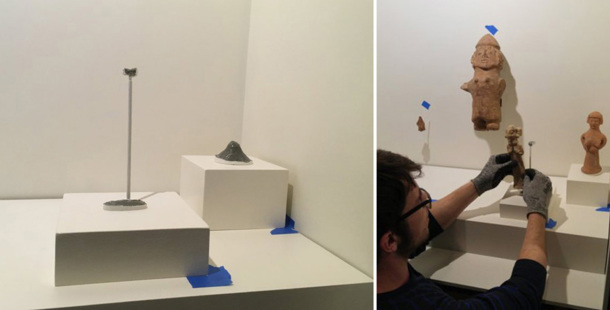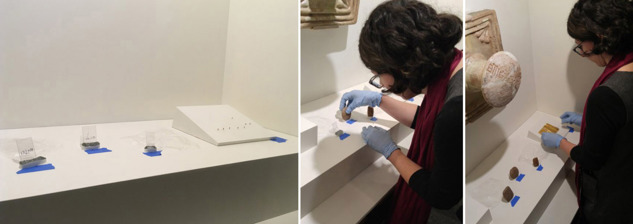- Events & Programs Home
- Calendar
- Accessibility
- Adults
-
Families & Teens
- Families & Teens Home
- 10x10 Teen Art Expo
- Art on the Rise
- Art Together: Art Making for Families with Children Ages 3–5
- Babies Sing with May Festival Minis
- Boy Scouts / Girl Scouts
- CAM Kids Day
- Family Storytime and Gallery Walk
- Family Studio: Art Making for Families with Children Ages 6–12
- Games in the Galleries
- Members-Only Baby Tours
- Public Baby Tours
- REC Reads
- Rosenthal Education Center (REC)
- Saturday Morning Art Class
- See Play Learn Kits
- Summer Camp
- Teen Fest: Zine and Comic Exchange
- RECreate
- Teachers
- Community Outreach
- Fundraisers
- Plan Your Own Event

- Events & Programs Home
- Calendar
- Accessibility
- Adults
-
Families & Teens
- Families & Teens Home
- 10x10 Teen Art Expo
- Art on the Rise
- Art Together: Art Making for Families with Children Ages 3–5
- Babies Sing with May Festival Minis
- Boy Scouts / Girl Scouts
- CAM Kids Day
- Family Storytime and Gallery Walk
- Family Studio: Art Making for Families with Children Ages 6–12
- Games in the Galleries
- Members-Only Baby Tours
- Public Baby Tours
- REC Reads
- Rosenthal Education Center (REC)
- Saturday Morning Art Class
- See Play Learn Kits
- Summer Camp
- Teen Fest: Zine and Comic Exchange
- RECreate
- Teachers
- Community Outreach
- Fundraisers
- Plan Your Own Event
Blog: CAM Uncovered
Blog: CAM Uncovered
- Home
- Plan Your Visit
- Art
-
Events & Programs
- Events & Programs Home
- Calendar
- Accessibility
- Adults
-
Families & Teens
- Families & Teens Home
- 10x10 Teen Art Expo
- Art on the Rise
- Art Together: Art Making for Families with Children Ages 3–5
- Babies Sing with May Festival Minis
- Boy Scouts / Girl Scouts
- CAM Kids Day
- Family Storytime and Gallery Walk
- Family Studio: Art Making for Families with Children Ages 6–12
- Games in the Galleries
- Members-Only Baby Tours
- Public Baby Tours
- REC Reads
- Rosenthal Education Center (REC)
- Saturday Morning Art Class
- See Play Learn Kits
- Summer Camp
- Teen Fest: Zine and Comic Exchange
- RECreate
- Teachers
- Community Outreach
- Fundraisers
- Plan Your Own Event
- Give & Join
- About
- Tickets
- Calendar
- Exhibitions
- Collections
- Blog
- Shop
Behind the Scenes in Installation: Reinstalling Objects in the Near Eastern Galleries
by Design and Installation
2/6/2018
design and installation , exhibition design , displays , near eastern , reinstallation
This past fall, preparators worked to upgrade the display in the museum’s Hanna Wing galleries. The decision to prioritize this project was twofold. First, Ainsley Cameron, the museum’s newly appointed Curator of South Asian Art, Islamic Art & Antiquities was interested in reinterpreting the galleries to present highlights of our Nabatean and Near Eastern Collections. Secondly, the existing lighting systems generated too much heat and were out of date.
For this new presentation, the art objects were divided into several thematic groups including worship, writing, representations of people and representations of animals. The installation team researched and installed new LED case lighting in addition to repainting the cases to give them a fresh look. Several months prior to re-installation, the team worked with Ainsley to lay-out the cases and document these decisions in order to make the appropriate plinths (bases) and mounts for display. Wooden plinths were constructed out of premium grade birch plywood to elevate and draw attention to specific pieces as well as create a dynamic case layout for the viewer. Prior to the finished display, each plywood plinth was sealed with 3 coats of a water-based sealer to prevent the wood from off-gassing, and then painted the appropriate color for display.
The team worked for several weeks designing and building custom object mounts for pieces that needed to be either stabilized, slanted, elevated or projected from the backboard of the case in order to meet the curator’s display preferences and priorities. These display mounts were constructed from a variety of materials and techniques including soldered and bent brass, molded Apoxie Sculpt and bent Plexiglas. In the images below, you can see how these custom mounts are used to display the artwork.

Preparator PJ Grimm installs 6-7th century BC earthenware figure onto a brass and Apoxie Sculpt mount that supports and stabilizes this ancient artifact.

Object Conservator Kelly Rectenwald carefully places clay tablets and a gold plaque on their display mounts.
Cincinnati, OH 45202
Toll Free: 1 (877) 472-4226
Museum Hours
Museum Shop
Terrace Café
Library
Cincinnati Art Museum is supported by the tens of thousands of people who give generously to the annual ArtsWave Campaign, the region's primary source for arts funding.

Free general admission to the Cincinnati Art Museum is made possible by a gift from the Rosenthal Family Foundation. Exhibition pricing may vary. Parking at the Cincinnati Art Museum is free.
Generous support for our extended Thursday hours is provided by Art Bridges Foundation’s Access for All program.

General operating support provided by:



